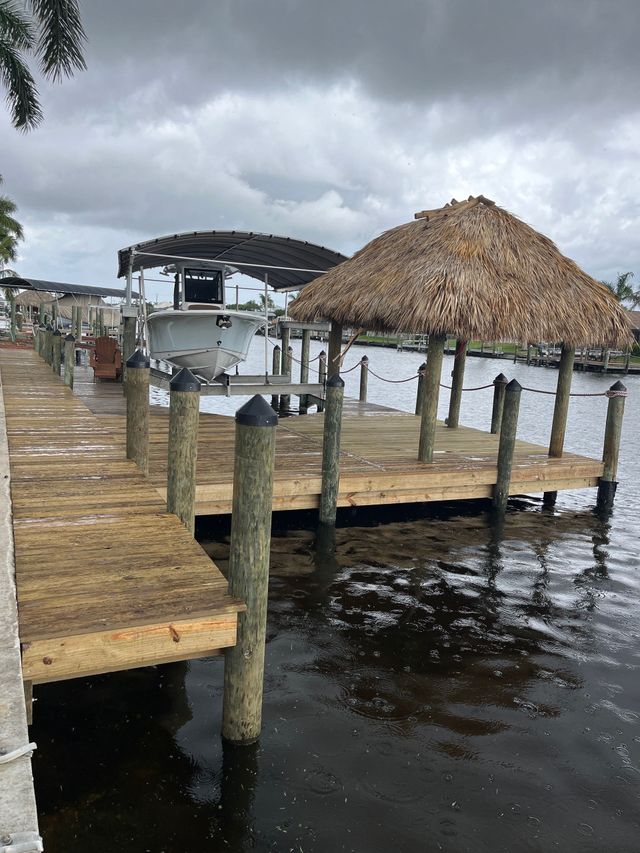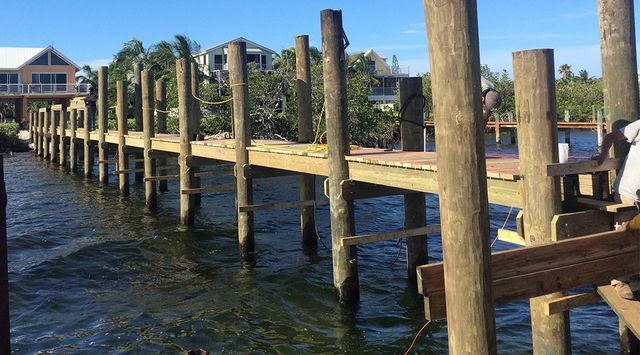Seasonal Preparations: When to Schedule Your Dock Repairs
Seasonal Preparations: When to Schedule Your Dock Repairs
Blog Article
Efficient Dock Repair Service Techniques: Ensuring Structural Stability
Making sure the architectural honesty of docks via effective repair work techniques is vital for the long life and safety and security of aquatic facilities. This includes a multi-faceted method beginning with comprehensive examinations using sophisticated modern technologies like sonar devices and from another location operated automobiles (ROVs) to identify both visible and concealed damages. Subsequently, choosing the appropriate repair work products, such as corrosion-resistant alloys and composite materials, is essential for resilience. Architectural support approaches, including the implementation of cross-bracing systems and load-distribution plates, play a crucial role in mitigating tension factors. However, the relevance of these techniques ends up being evident when discovering advanced fixing approaches and preventative maintenance approaches.
Examining Dock Damage
Evaluating dock damages is a critical very first step in making certain the architectural stability and security of any type of docking center. This first evaluation includes a detailed examination to identify both noticeable and concealed problems. Key aspects to analyze include the dock's structure, pilings, outdoor decking, and equipment. Each element has to be looked at for indicators of wear, rot, corrosion, or other forms of degradation that could compromise the structural integrity.
Architectural designers or qualified examiners normally do these evaluations utilizing specialized methods and tools. Underwater evaluations may employ sonar tools or from another location ran cars (ROVs) to spot immersed damages. Over water, visual inspections are complemented by utilizing dampness meters and various other analysis tools to uncover underlying problems not promptly noticeable to the nude eye.

Picking Fixing Materials
Choosing the suitable repair service materials is a critical step in the dock restoration procedure, one that straight affects the durability and efficiency of the repaired framework. Product option need to be driven by elements such as environmental problems, load-bearing requirements, and compatibility with existing dock components.
Along with wood, composite materials are significantly prominent because of their toughness and low maintenance needs. Compounds, generally made from a mix of plastic and timber fibers, provide superb resistance to rot, bugs, and UV damage. For metal anchors, choosing corrosion-resistant alloys such as galvanized steel or marine-grade light weight aluminum is vital to avoid corrosion and guarantee architectural integrity in saline water problems.
Epoxy resins and marine-grade sealers are indispensable for fixing splits and sealing joints, giving a waterproof barrier and boosting the dock's overall strength. By thoroughly selecting top notch materials, dock repair services can attain long-lasting results, consequently protecting versus future deterioration and guaranteeing safe, trustworthy use.
Architectural Reinforcement Methods
Effective structural reinforcement techniques are vital in making sure the security and long life of dock fixings. One basic approach entails making use of steel or composite reinforcement bars (rebar) within concrete frameworks. Rebar provides additional tensile stamina, avoiding fractures and distributing tons a lot more equally. This approach is specifically reliable for anchors subjected to hefty tons or extreme environmental conditions.
Another important technique is the application of fiber-reinforced polymers (FRP) These materials supply high strength-to-weight proportions and superb resistance to rust, making them optimal for reinforcing concrete or wood docks. FRP can be used in strips or sheets and bound with epoxy materials to boost architectural stability.
Bracing and securing systems likewise play a vital role in architectural reinforcement. Cross-bracing, using steel or wooden beam of lights, can counteract side forces, lowering persuading and movement. Anchoring systems, such as helical piers or driven heaps, supply a stable structure by transferring lots to deeper, extra stable dirt layers.
Lastly, the assimilation of load-distribution plates can help disperse weight more uniformly across the dock's surface, mitigating local tension factors. These techniques jointly guarantee that anchors stay durable and risk-free, capable of enduring the roughness of their operational environment.
Advanced Repair Service Methods

Another advanced method includes undersea welding, which allows for repair work to be performed without the need to dewater the area. This technique is especially helpful for attending to architectural problems in submerged dock elements, making sure marginal disruption to operations. Enhanced welding strategies, paired with robot systems, supply accuracy and dependability, thus prolonging the lifespan of the dock.
Additionally, cathodic protection systems are applied to protect against deterioration in metal dock structures. By using sacrificial anodes or satisfied existing systems, these methods successfully alleviate the electrochemical processes that lead to product degeneration.
Finally, progressed tracking technologies, such as structural wellness tracking (SHM) systems, provide real-time information on the condition of dock frameworks. These systems allow proactive upkeep and timely treatments, eventually ensuring the lasting architectural integrity of the dock.
Upkeep and Prevention
Upkeep and prevention are basic ideas that underpin the durability and safety of dock frameworks. Routine inspections are paramount, important source permitting for very early detection of damage, possible weaknesses, and ecological effects. An aggressive approach, entailing routine checks for deterioration, rot, and structural changes, mitigates expensive repairs and prolongs the dock's operational life.
Safety nets ought to include using safety finishes to metal elements to defend against corrosion and utilizing treated wood to stand up to decay. Furthermore, ensuring appropriate drain and air flow can protect against water build-up, which is a common root cause of architectural destruction. Including high quality products and sticking to manufacturer guidelines during building and repair work stages likewise play crucial duties in boosting longevity.

Educating workers in dock maintenance best techniques makes sure constant application of preventive actions. Leveraging technical developments, such as drones for evaluations and sensing units for real-time tracking, can even more enhance upkeep efforts. By prioritizing upkeep and prevention, dock proprietors can guarantee structural stability, operational safety and security, and economical management over the dock's life-span.
Final Thought
In conclusion, keeping the structural integrity of aquatic centers demands comprehensive dock repair work strategies. Advanced repair strategies, paired with regular maintenance methods, make sure the dock continues to be operational and risk-free under varied ecological conditions.
Guaranteeing the architectural integrity of docks with efficient repair service methods investigate this site is extremely important for the long life and safety of aquatic centers.Picking the appropriate repair materials is a pivotal step in the dock remediation process, one that directly influences the long life and efficiency of the fixed framework.Reliable architectural reinforcement strategies are crucial in ensuring the security and long life of dock fixings. By focusing on upkeep and prevention, dock owners can make certain architectural honesty, operational security, and cost-effective administration over the dock's life-span.
In final thought, preserving the structural honesty of marine facilities demands detailed dock repair work techniques.
Report this page